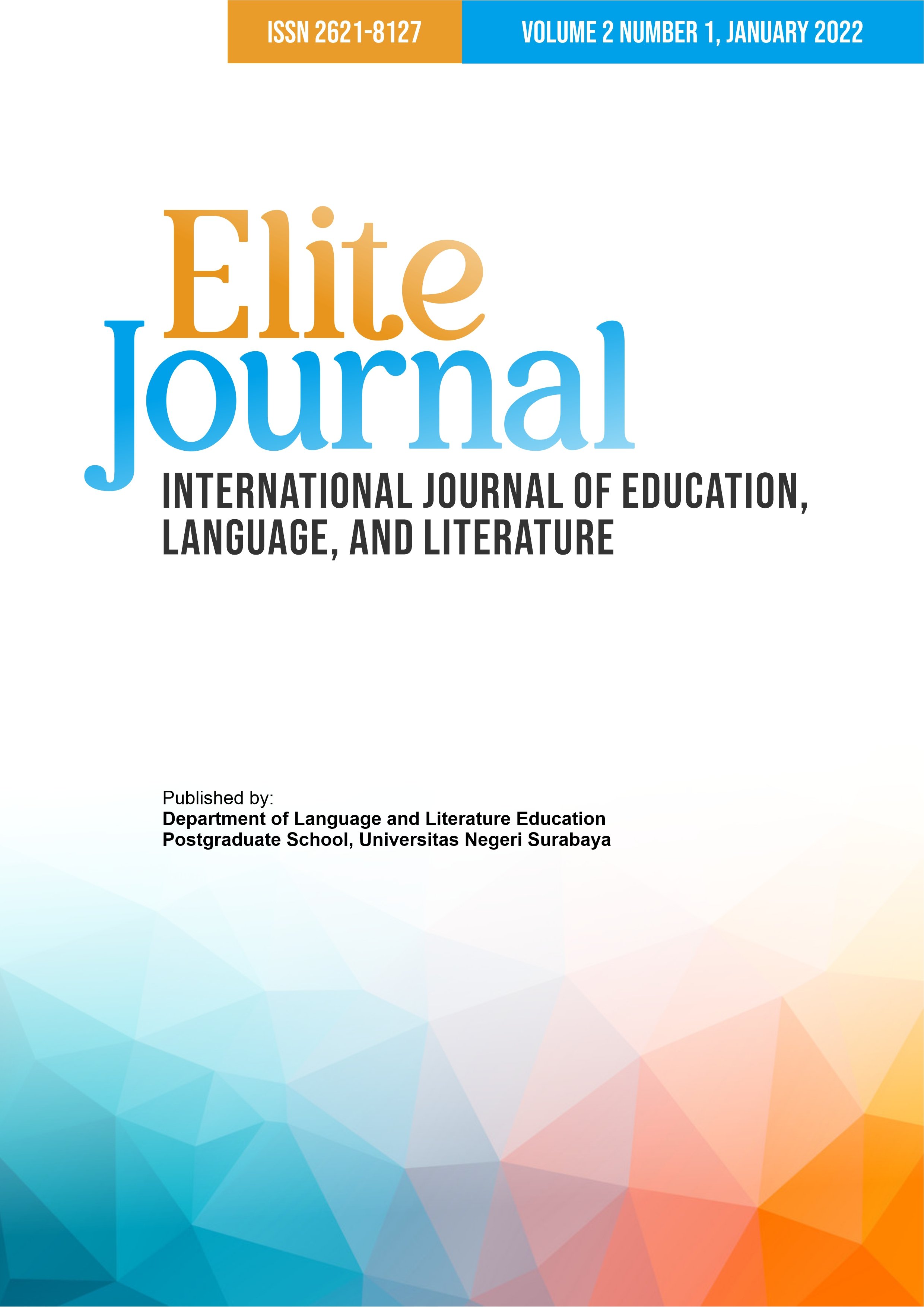MULTIDIMENSIONAL POVERTY IN T. S. ELLIOT’S MORNING AT THE WINDOW
DOI:
https://doi.org/10.26740/elitejournal.v2n1.p62-72Keywords:
poetry, semiotics, poverty, dimensions of povertyAbstract
Poverty is a phenomenon of human suffering that is often brought up as the main theme in the works of literature. The study examines how poverty is manifested in the poem entitled Morning at the Window by T. S. Elliot. The analysis focuses on interpreting the poem’s meaning and further analyses the portrayal of poverty. The theoretical framework used to analyze the poem's meaning is the semiotics of poetry by Michael Riffaterre. The dimensions of poverty by Robert Chambers are also used to analyze the elements of poverty that constructed the main issue of the poem. The analysis focuses on the unsustainability of meaning and interpretation from heuristic and hermeneutic reading. The overall meaning is drawn to reveal how the poem portrays the issue of poverty. Besides, the concept of poverty depicted in the poem is demystified based on the dimensions of poverty by Chambers. The analysis shows that the poem illustrates its main issue by strongly depending on the objective, representing poverty’s dimensions. The identified dimensions of poverty that constructed the issue are powerlessness, isolation, vulnerability, and poverty. These dimensions are illustrated by depicting the maids’ physical and mental state caused by living in poverty.
References
Asriningsari, A., & Umaya, N. M. (2018). Semiotika teori dan aplikasi pada karya sastra. IKIP PGRI Semarang Press.
Chambers, R. (2005). Participation, pluralism and perceptions of poverty. International Conference: The Many Dimensions of Poverty.
Chatman, S. (1968). The language of poetry. Houghton Mifflin Company.
DiYanni, R. (2002). Literature: Reading fiction, poetry and drama. McGraw-Hill Book Company.
Faruk. (2005). Pengantar sosiologi sastra. Pustaka Pelajar.
Haughton, J., & Khandker, S. R. (2009). Handbook on poverty and inequality. World Bank.
Kauppinen-Raisanen, H., & Jauffret, M.-N. (2018). Using colour semiotics to explore colour meaning. Qualitative Market Research: An International Journal.
Keraf, G. (2009). Diksi dan gaya bahasa. Gramedia Pustaka Utama.
Matterson, S., & Jones, D. (2000). Studying poetry. Bloomsbury Academic.
Riffaterre, M. (1978). Semiotics of poetry. Indiana University Press.
Rohwerder, B. (2016). Poverty and inequality. In GSDRC Applied Knowledge Service. https://doi.org/10.1177/0974910113505796
Segers, R. T. (1978). Studies in semiotics: The evaluation of literary text. Peter de Ridder Press.
Teeuw, A. (1984). Sastra dan ilmu sastra: Pengantar teori sastra. Pustaka Jaya.
Downloads
Published
How to Cite
Issue
Section
License
Copyright (c) 2021 Abdika Taslih Amrullah, Christinawati, Edi Dwi Riyanto

This work is licensed under a Creative Commons Attribution 4.0 International License.
 Abstract views: 618
,
Abstract views: 618
, PDF Downloads: 520
PDF Downloads: 520





